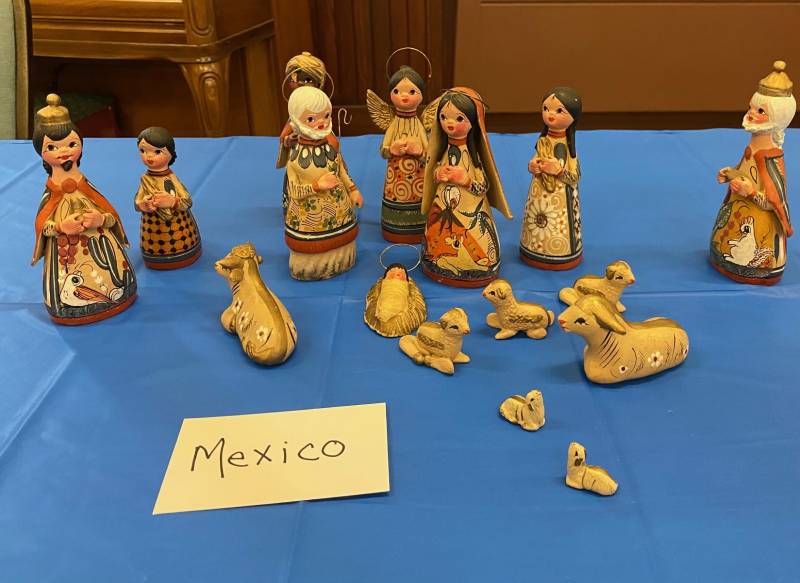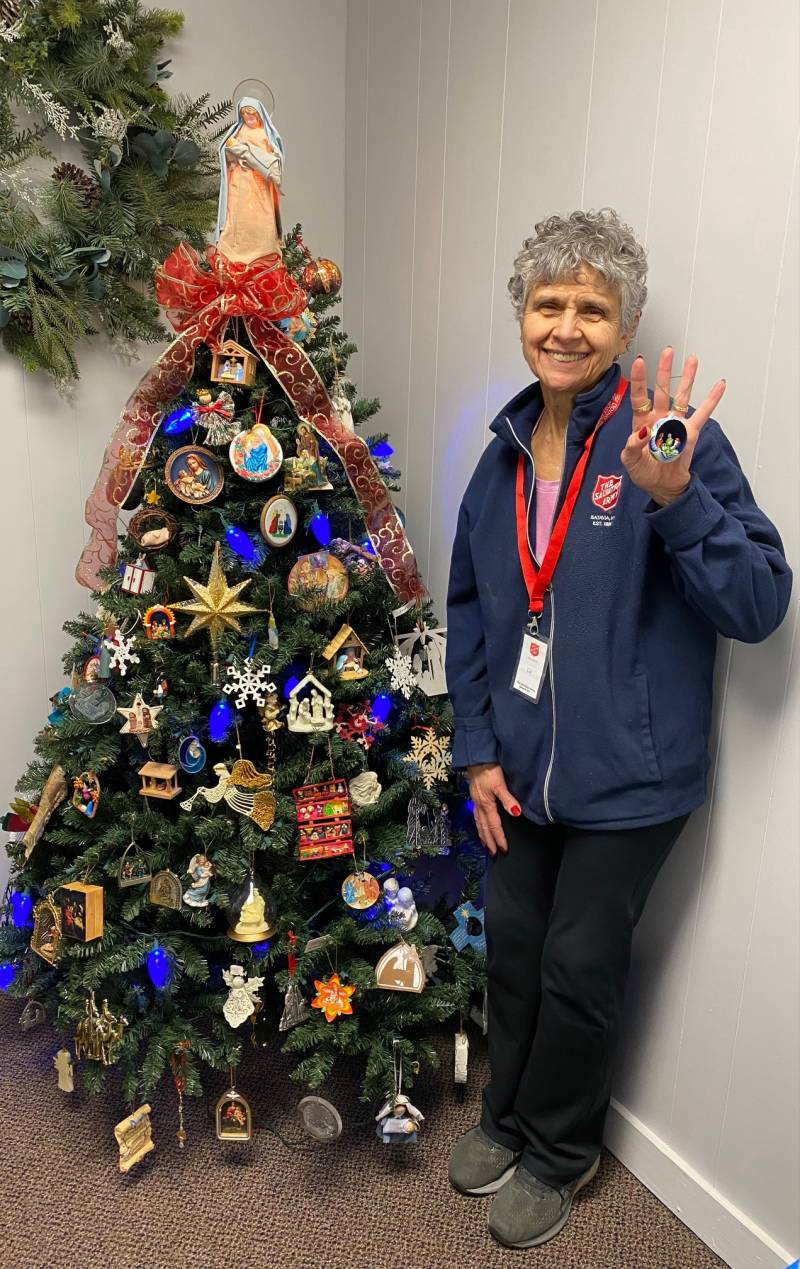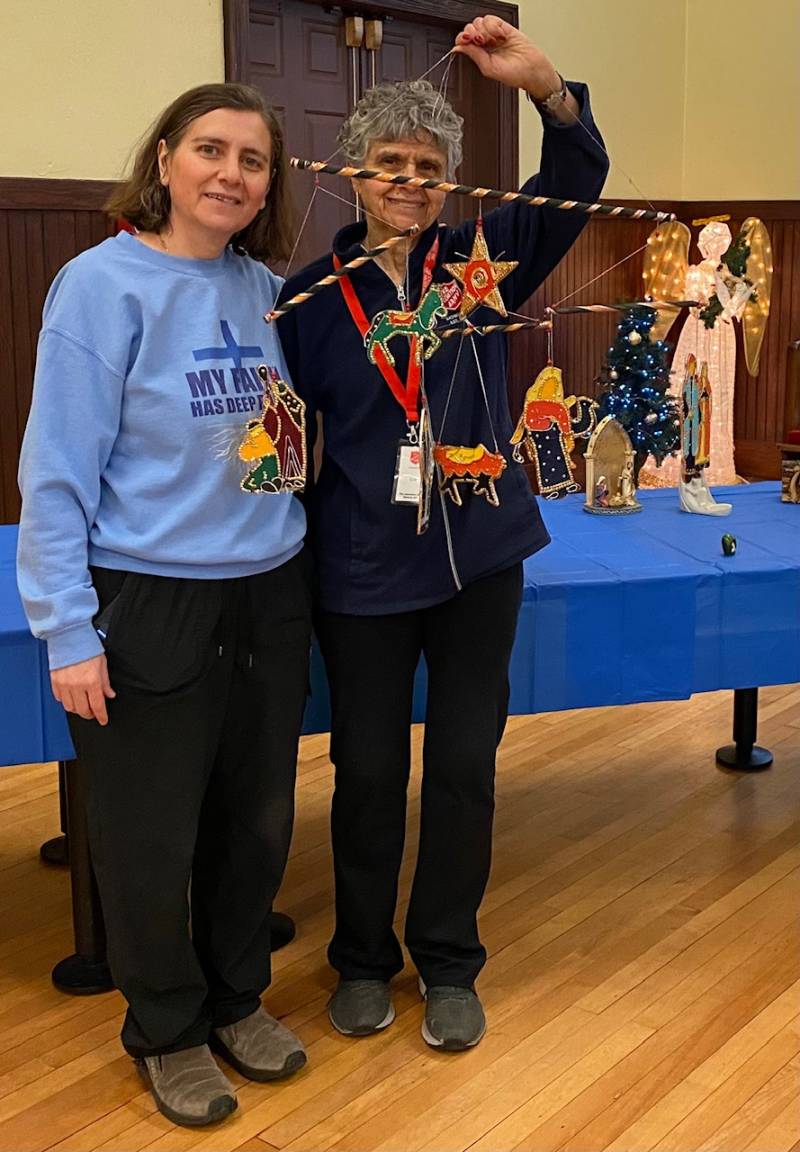
Photo by Joanne Beck
Liz Saleh held up the tiniest of nativity scenes that she has acquired over the years as one of nearly 100 in her vast collection.
The piece — a polished brown exterior with a white interior resembling ivory — has been carved out of a tagua nut from the South American Amazon rain forest. It represents one of several countries in a display that will be opened to the public next week. Her collection began with a merged nativity set from the childhoods of her and her late husband, David, dating back more than 70 years.
Ever since then, she just kept amassing more of the iconic Christmas scenes, typically featuring a manger, Joseph, Mary, baby Jesus and animals.
“I just loved them, and people started giving them to me. Once they know you like something, they keep giving them to you,” Saleh said while setting up her pieces Friday at Batavia First Presbyterian Church. “And I just started collecting them.”
Bethlehem Walk with St. Nicholas & Community Dinner will feature nativity scenes from Saleh and fellow Batavia resident Laura Dommer. The event will also include a meal of bread, homemade minestrone, Italian wedding soups and Advent-themed sugar cookies, and a visit from the traditional St. Nicholas. It is free of charge and is from 5:30 to 7 p.m. Wednesday at Batavia First Presbyterian Church, 300 E. Main St., Batavia.
Most likely, you’ve either grown up with a nativity scene in your home or you have seen one somewhere, and they are steeped in deep history from St. Francis of Assisi, who more than 800 years ago wanted to remind the world that the season was about more than just giving or receiving gifts; it was about celebrating the birth of Jesus. Though, certainly, many nativity scenes have included the three wisemen bringing gifts to Jesus, all of them have not depicted that aspect.
The set that Saleh has, for example, from Assisi, is very simple, with a modest manger, and the key characters of Joseph, Mary, baby Jesus and a few animals arranged in front of it. A colorful metal display from Mexico, on the other hand, more brilliantly shows the wise men holding up their gifts of gold, frankincense and myrrh.
Each country seems to tell a slightly different story in how the nativity is portrayed through materials, colors, simplicity or complexity, and the presence of animals as an important piece to the story.
Saleh’s collection also includes a trifold-certified painting of Byzantine art using tempera paint — with egg yolks mixed in for a rich golden cast — from a museum in Boston, and materials of pottery, wood, hand-spun lambswool, a milked, anise star, sticks, grapevine wreath, pieces of cloth and other items from Mother Nature.
There are sets from countries including Indonesia, Ecuador, Peru, Africa, Jerusalem, Germany, Portugal, Venice, Vietnam, Armenia, Italy, Bangladesh, India and the United States.
As Saleh unpacked items, she talked about how dear friends made something for her or gave a set to her, and each unpacked box sparked more memories. She unwrapped a second one from Mexico, with small, intricate details painted onto the figurines.
“I fell in love with this,” she said. “I think it’s beautiful, it’s hand-painted.”
Dommer has 108 nativity sets, mostly given to her as gifts, she said. She usually keeps about three favorites out while the remaining are tucked away in storage — a Peanuts Charlie Brown set, Fisher Price, and part of a Fontanini Village collection.
A nativity goes beyond an aesthetic decoration, Dommer said.
“To me, it means I really understand what Christmas is about, it’s about the birth of our savior,” she said. “It’s going to be interesting to see what people say (about the collection). Some are very, very unique. I think they might say how did you find this or where did you get this. I do have one over two feet tall.”
Her grandmother used to work at Bethany Ridge apartments, and they were cleaning out the attic and discovered the two-foot nativity with the intent to throw it away. Grandma said no, she knew of a better home for it, Dommer said.
During the evening, St. Nicholas will be reading the story of his namesake — the actual story of St. Nicholas, a bishop in Turkey who heard about impoverished parents who were going to sell their daughters into servitude. St. Nicholas threw a bag of gold coins down the chimney to help them out and alleviate the need to sell their daughters.
That has served as the foundation for Feast Day of St. Nicholas and a tradition of giving chocolate coins to children, which will also be part of the event, the Rev. Roula Alkhouri said.
“That’s the whole spirit of this, people can come and share in this and the story of how love evolved in different ways, and how people have imagined it in different ways,” she said.
Parishioners will also be bringing in their nativities, and a nativity tree is decorated with dozens of Saleh’s nativity ornaments.
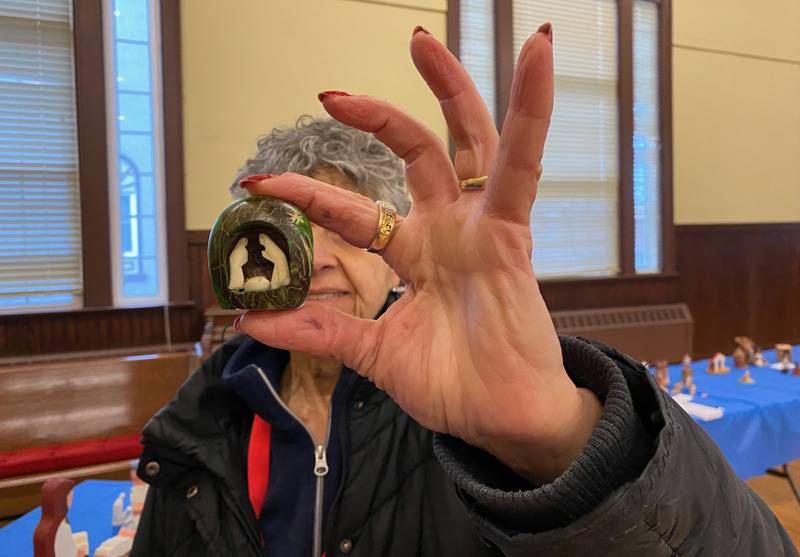
Photo by Joanne Beck
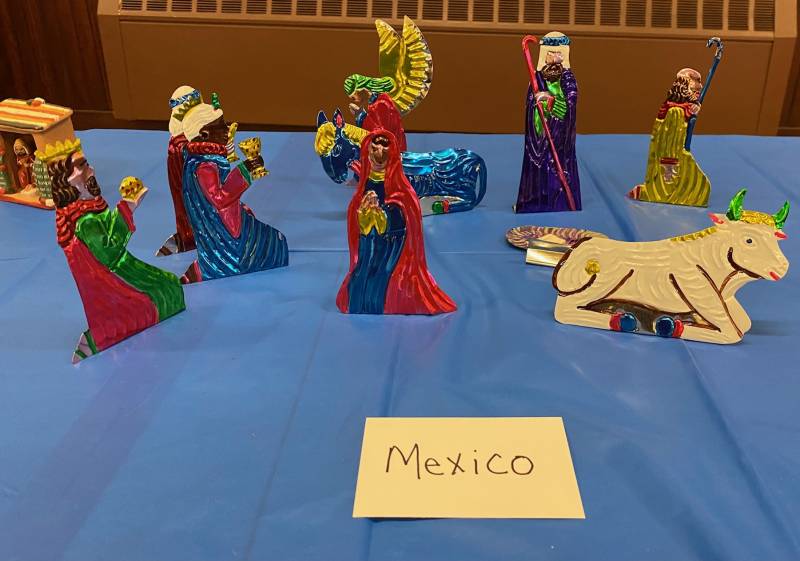
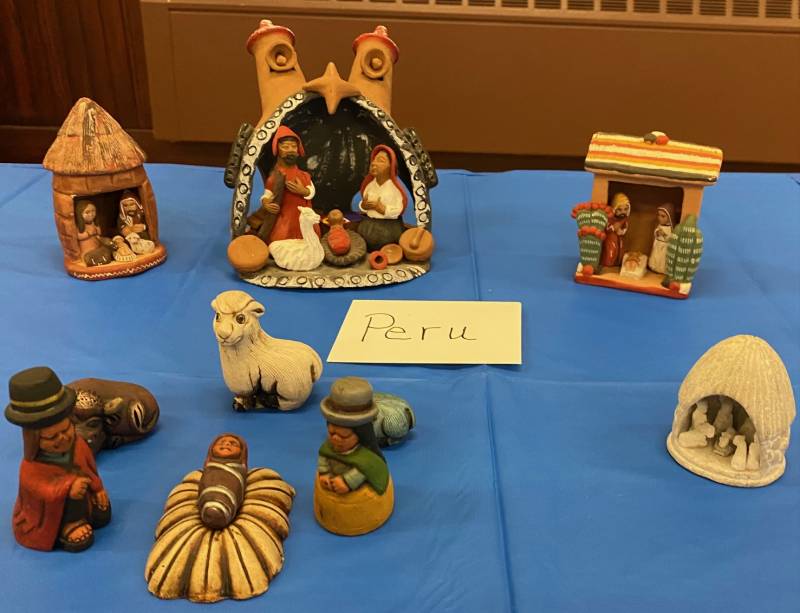

Photo by Joanne Beck
